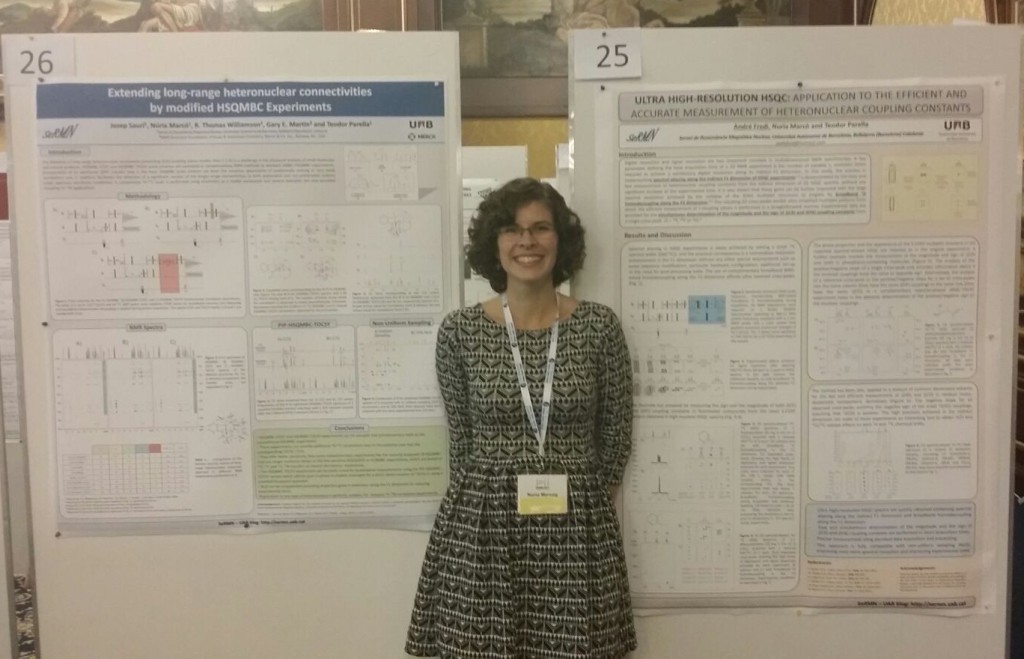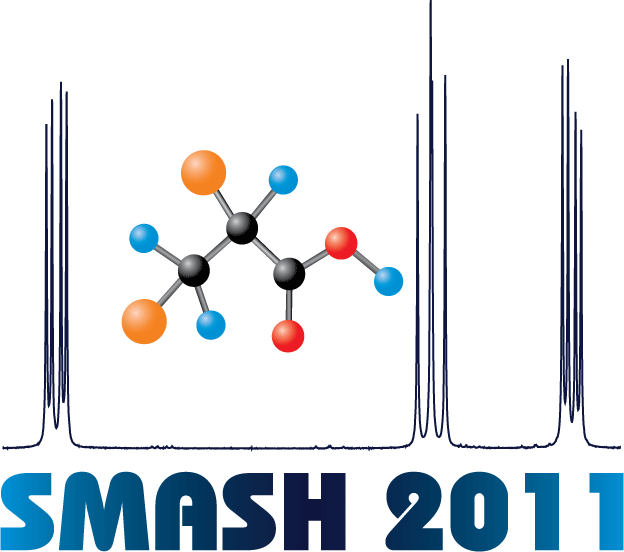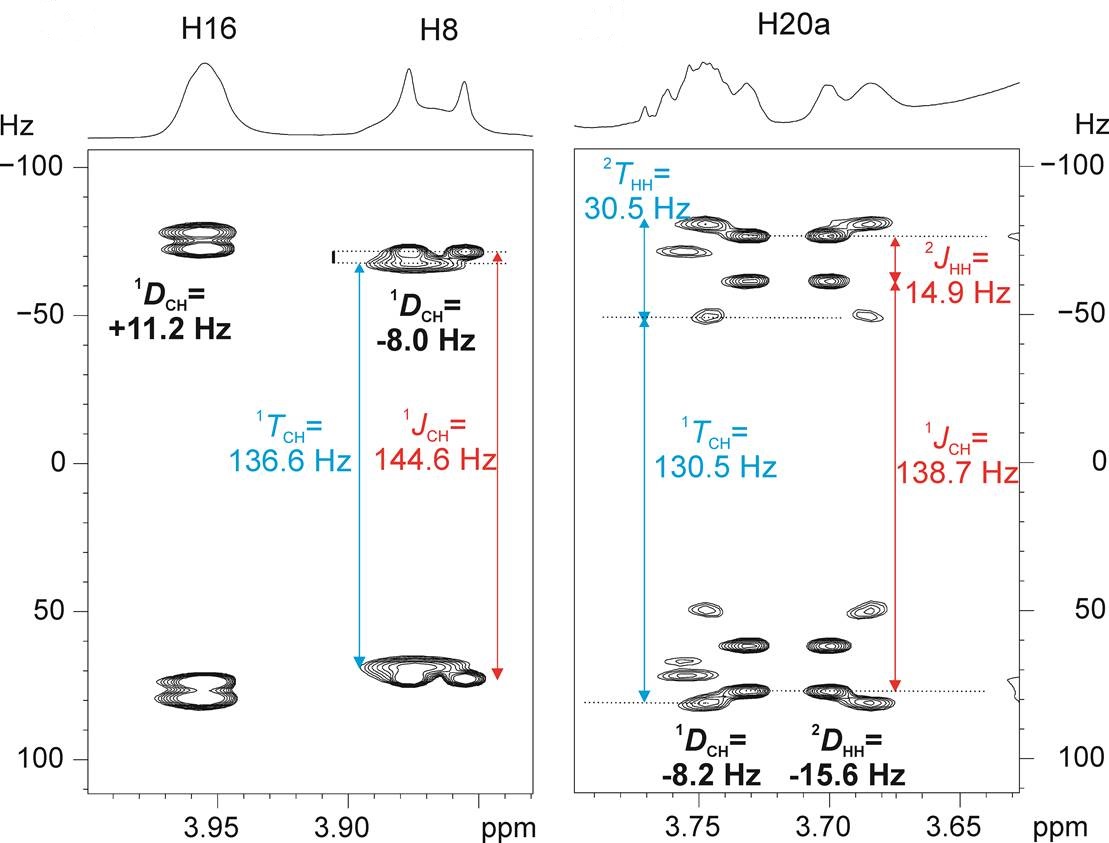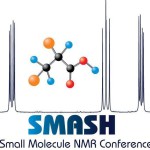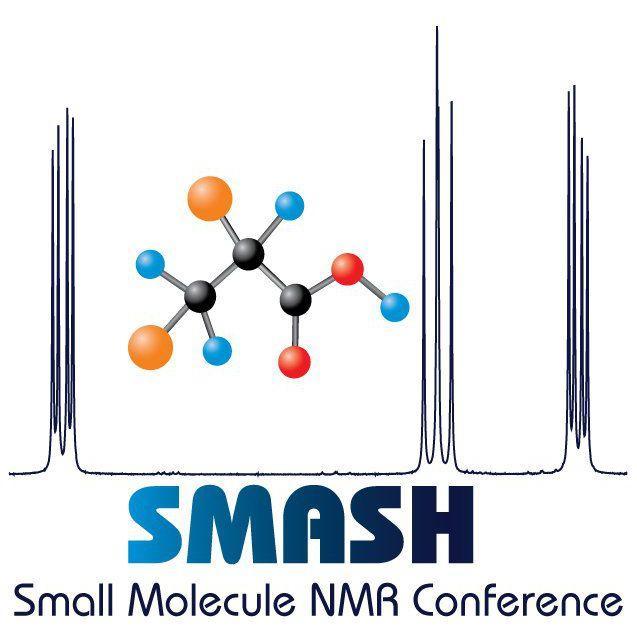
Some of our last research works has been presented by Núria Marcó at the annual meeting of the SmallMolecule NMR Conference (SMASH) that has been taken place in Baveno (Italy) from 20thto 24thSeptember 2015.
Find below a summary of our contributions.
Poster nº 25: “Ultra high-resolution HSQC: application to the efficient and accurate measurement of heteronuclear coupling constants”. Núria Marcó, Andre Fredi and Teodor Parella.
Abstract: Digital resolution and signal resolution are two important concepts in multidimensional NMR spectroscopy. One of the more critical parameters defining the total acquisition time of a 2D NMR experiment is the number of variable t1evolution times required to achieve a satisfactory digital resolution in its indirect F1 dimension. In this study, the success of implementing spectral aliasing along the indirect F1 dimension of HSQC experiments is demonstrated by the easy measurement of heteronuclear coupling constants from the indirect dimension of 2D HSQC spectra, without any significant increase of the experimental time. It is also shown that the gains of introducing aliasing are further improved with the large signal resolution achieved by the collapse of the J(HH) multiplet structure by broadband 1H homodecoupling in the F2 dimension. The resulting 2D cross-peaks exhibit ultra simplified multiplet patterns from which the measurement of the active J values is determined in a straightforward manner. Experimental data will be provided for the simultaneous determination of the magnitude and the sign of J(CX) and J(HX) coupling constants (X = 19F, 31P or 2H).
Poster nº 26: “Extending long-range heteronuclear NMR connectivities by modified HSQMBC experiments”. Josep Saurí, Núria Marcó, R. Thomas Williamson, Gary E. Martin and Teodor Parella.
Abstract: The detection of long-range heteronuclear correlations associated with J(CH) coupling values smaller than 1-2 Hz is a challenge in the structural analysis of small molecules and natural products. LR-HSQMBC, HSQMBC-COSY and HSQMBC-TOCSY pulse schemes are evaluated as complementary NMR methods to standard HMBC/HSQMBC experiments. The re-optimization of the interpulse delay and the incorporation of an additional J(HH) transfer step in the HSQMBC pulse scheme can favor the sensitive observation of traditionally missing or very weak correlations and, in addition, facilitates the detection of a significant number of still longer-range connectivities to both protonated and non-protonated carbons under optimal sensitivity conditions. A comparative 1H-13C study is performed using strychnine as a model compound and several examples are also provided including 1H-15N applications.
